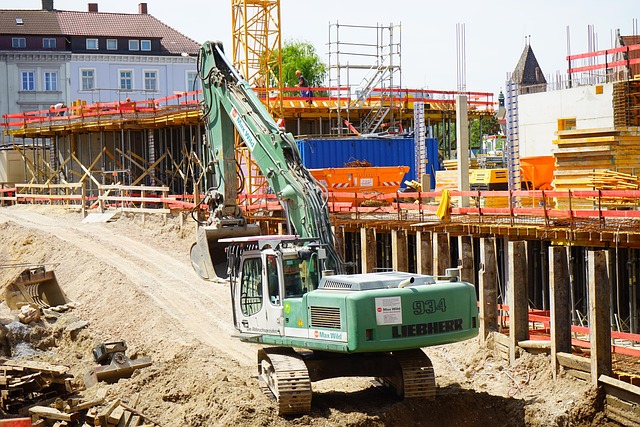Dynamic replacement transforms weak soil into a stable foundation by driving dense granular columns deep into the ground. This technique enhances load-bearing capacity, limits settlement, and reduces liquefaction risks—all without costly excavation or piling. By improving soil strength efficiently, it opens up design options for safer, more economical construction on challenging sites.
Understanding Dynamic Replacement: Definition, Process, and Use in Ground Improvement
Within civil engineering, Dynamic Ground Replacement Services have emerged as a reliable method for tackling weak or compressible soil conditions. This specialized solution combines dynamic energy with the strategic incorporation of granular materials, producing reinforced columns beneath the surface to significantly boost soil stability.
Additional reading : Maîtrisez le code de la route avec des vidéos interactives
Dynamic replacement begins by dropping a heavy weight—often from heights of up to 20 meters—onto the ground. This creates craters in the soft soil, which are then filled with coarse aggregate or stone. Alternating between impact and stone placement, these steps form substantial columns, generally ranging from 2 to 3.5 meters in diameter, that are compacted by repeated blows. The energy not only compacts the aggregate pillars but also densifies the surrounding soil, transmitting benefits to greater depths and enhancing the bearing capacity of the treated ground.
This process unfolds in clear stages:
Also read : What Are the Key Steps for Developing a Mobile Learning Platform for a Swindon-Based Business School?
- Preparation: Survey and design the site, with safety briefings for all personnel.
- Trial Compaction: Assess depths and energy needs.
- Material Delivery: Transport and stage stone or coarse aggregate.
- Execution: Drop weights, alternately filling voids with aggregate.
- Final Treatment: Shape and compact the surface for structural use.
Dynamic replacement proves invaluable across numerous applications. Projects frequently address issues such as bearing capacity improvement, settlement control, resistance to liquefaction, and mitigation of potential sinkholes in sites with problematic soils. This technique is considered especially cost-effective for large-scale industrial buildings, embankments, foundations for tanks, and infrastructure on organic or contaminated fills—situations where deep excavation would be more disruptive and expensive.
By adopting dynamic replacement, engineers can avoid complications tied to deep foundations, remove less native material, and ensure rapid project turnaround, all while delivering robust, high-performance soil support tailored to demanding civil engineering needs.
Technical Details and Execution Methods for Dynamic Replacement
Dynamic replacement is a robust ground improvement technique, combining elements of dynamic compaction with the benefits of stone column installation. This method, widely used in civil engineering, answers demands for enhanced bearing capacity, reduced settlements, and ground improvement in cohesive or weak soils that might otherwise pose challenges for building foundations.
Equipment and Materials: Weights, Stone Aggregates, and Depths Achieved
Execution relies on tracked crawler cranes that drop significant weights—sometimes from heights up to 20 meters—to create deep impact, assisting in the formation of large granular columns. These columns, composed of coarse stone aggregates, typically reach between 2 and 3.5 meters in diameter, with depths of influence ranging from 5 to 8 meters, occasionally extending as deep as 15 meters, depending on the soil’s properties and applied energy. Practitioners may also consider recycled aggregates for environmental and cost benefits.
Process Variations: With and Without Pre-Excavation, Incremental Pillar Building
Dynamic replacement adapts through process variations:
- Placement and compaction of aggregates can proceed with or without pre-excavation.
- Material may be delivered to site and incorporated incrementally as large granular pillars are built up during alternating pounding and filling cycles.
Incorporation of Recycled Aggregates and Environmental Considerations
Adoption of recycled aggregates during the dynamic replacement process can significantly reduce resource consumption and help projects meet sustainability goals. This adaptation not only underscores efficient ground improvement techniques but may also streamline approval processes for environmentally conscious developments.
These methods directly support dynamic content and user experience improvement in site projects, mirroring the value of dynamic text swapping in marketing platforms or Unbounce content customization—each aims to optimize outcomes with precision and adaptability. Similarly, initiatives such as Instapage dynamic text features strive to perfect results by refining processes or materials according to specific project needs.
Applications, Performance, and Project Examples
Infrastructure and Industrial Projects Employing Dynamic Replacement
Dynamic replacement benefits in marketing are well-illustrated by large infrastructure and industrial projects that demand both speed and reliability. Dynamic replacement soil methods are particularly valued for the ability to transform weak, compressible materials into robust ground capable of supporting heavy loads. For instance, dynamic compaction equipment is used to form large granular columns, reducing the need to remove unstable fills and keeping costs manageable—mirroring the approach in replacement strategies for kitchen gadgets, where targeted intervention avoids total overhauls.
Performance Outcomes: Increased Load Capacity, Controlled Settlement, Rapid Drainage
Projects employing dynamic replacement demonstrate measurable performance outcomes:
- Increased load capacity is achieved by driving stone aggregate into soft soils with dynamic compaction equipment.
- Controlled settlement is observed due to the stiff columns, reflecting the effectiveness seen in prolonging appliance lifespan through replacements.
- Rapid drainage is also improved as the granular columns act as drains, directly benefiting large-scale builds much like the swift efficiency found in kitchen gadget part swaps.
Notable Projects: Warehouses, Refineries, Highways, Aerospace Facilities
Case studies on dynamic content effectiveness highlight the technique’s versatility. Notable projects using dynamic replacement soil methods span warehouses, refineries, highways, and aerospace facilities. Results show that deep dynamic compaction, including Keller dynamic compaction approaches, offers increased design flexibility while reducing foundation costs—paralleling dynamic replacement benefits in marketing where content personalization brings measurable uplift in engagement.
Advantages, Limitations, and Comparative Assessment
Advantages: Cost Savings, Sustainability, Enabling Shallow Foundations
Dynamic replacement reduces downtime with quick part swaps by avoiding extensive excavation and streamlining ground improvement processes. This method is especially efficient for weak, compressible soils, where traditional approaches may require lengthy, disruptive work. It cuts maintenance costs with proactive replacements since the reinforced columns limit settlement, reduce risk from soil failure, and often permit the use of shallow foundations. Environmental sustainability improves by using recycled aggregates and limiting spoil generation. Another key aspect: dynamic replacement enables rapid construction, keeping project timelines on track and facilitating benefits of real-time website content updates in digital documentation and monitoring.
Limitations and Applicability: Site and Soil Suitability, Depth Constraints
The method excels mainly in cohesive, fill, or organic soils; it may be less suitable in very dense or hard ground. There are depth constraints—practical improvement is often limited to 5-8 meters, sometimes reaching up to 15 meters, depending on site investigations. Success depends on detailed soil analysis to determine applicability, mirroring dynamic content impact on SEO where relevancy to “site conditions” is decisive.
Comparison to Related Techniques: Dynamic Compaction, Vibro Stone Columns, Traditional Methods
Compared to dynamic compaction, dynamic replacement combines impact energy with granular column formation, enhancing reinforcement and drainage. Unlike vibro stone columns, which require vibration, it relies on heavy drop weights for settlement control and is more apt for fine-grained soils. Used appropriately, it helps in cutting maintenance costs with proactive replacements and showcases the benefits of real-time website content updates in project records and stakeholder communications.











